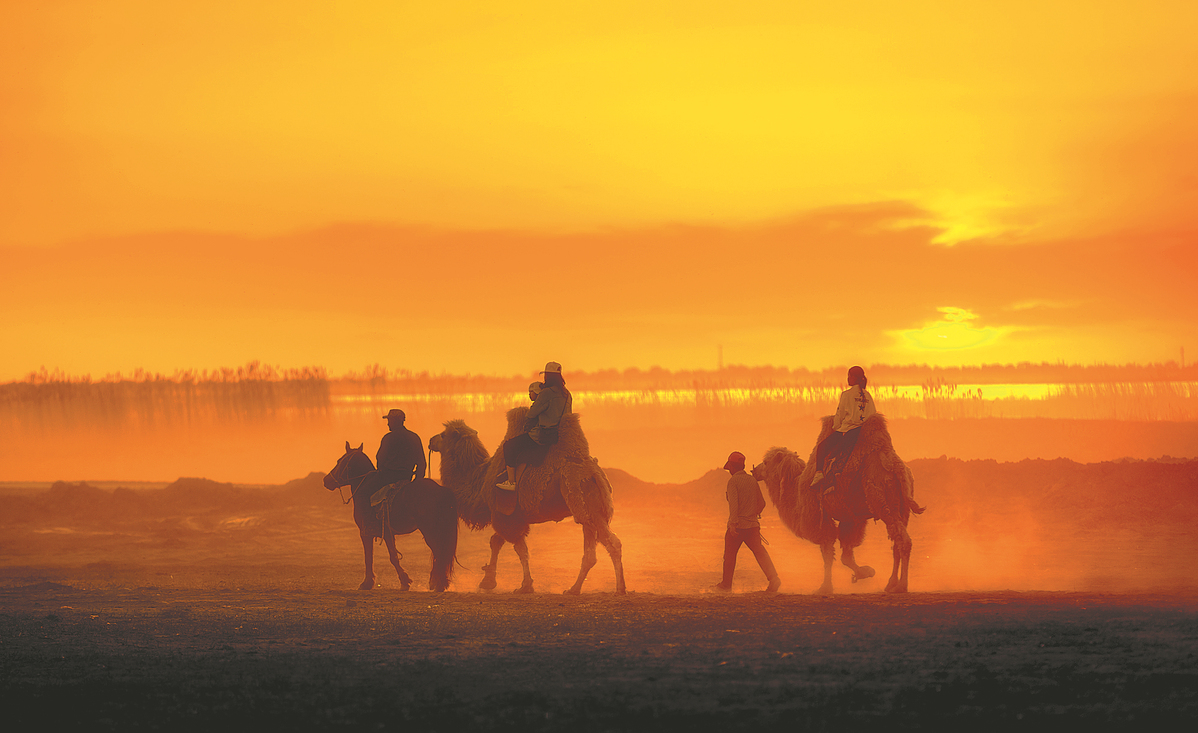Wildlife returns to famous lake in wake of cleanup


Ulansuhai Nur's environment is improving every year, thanks to government initiatives. Yuan Hui reports from Hohhot with Hou Liqiang in Beijing.
Editor's Note: As protection of the planet's flora, fauna and resources becomes increasingly important, China Daily is publishing a series of stories to illustrate the country's commitment to safeguarding the natural world.
In the 1950s, Liu Wenbin's father relocated more than 800 kilometers from his famine-plagued hometown in Hebei province. He settled near Ulansuhai Nur, a famous lake in the Inner Mongolia autonomous region, attracted by the area's reputation as a land of fish and rice.
For years, the fishing industry was a reliable source of income for Liu's family. "When I was a child, we always came back from fishing with the boat full of our catch, accompanied by flocks of birds," the 53-year-old recalled.
However, as urbanization and industrialization accelerated around the lake in the 1990s, Liu witnessed the body of water, widely known as the "Pearl beyond the Great Wall", turn into a black and odorous mass that local people avoided as much as possible.
Now, with a treatment campaign that adheres to the philosophy of "mountains, rivers, forests, farmland, lakes, grassland and deserts are a life community", the local government has made marked progress in just a few years, rejuvenating the lake as a paradise for birds and raising Liu's hopes of seeing the return of the Ulansuhai Nur of his childhood.
Located in Bayannuur in the west of the region, Ulansuhai Nur is home to the largest wetland in the Yellow River Basin and a rare large grassland lake in the desert and semidesert area. As such, it is a natural environmental shield that reins in the sources of sandstorms that affect North China, where Beijing is located.
It is also an important node on the world's eight major bird migration routes, and is one of the world's few avian transit and breeding grounds in the desert and semidesert areas.
MOST POPULAR
- 1 A look at China's economy in Q1 of 2024
- 2 China to remove foreign ownership restrictions in value-added telecom services in pilot areas
- 3 Query service of A Guide to Working and Living in China as Business Expatriates launched
- 4 Clear negative lists to speed up services trade
- 5 Canton Fair opens in China with surge in overseas purchasers
Editors' Picks
 Infographic:
Health literacy rate up in 2023
Infographic:
Health literacy rate up in 2023
 Infographic:
How to understand China's production capacity
Infographic:
How to understand China's production capacity





